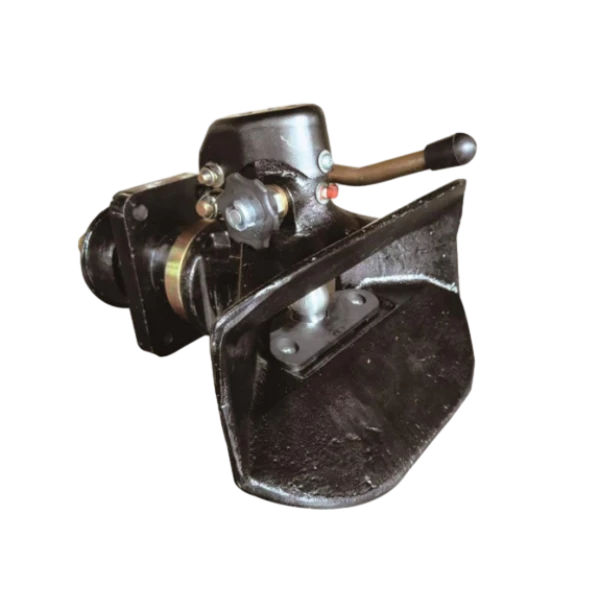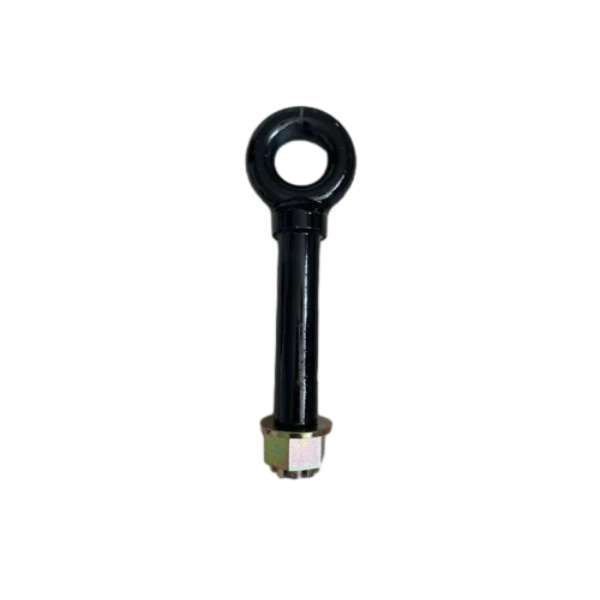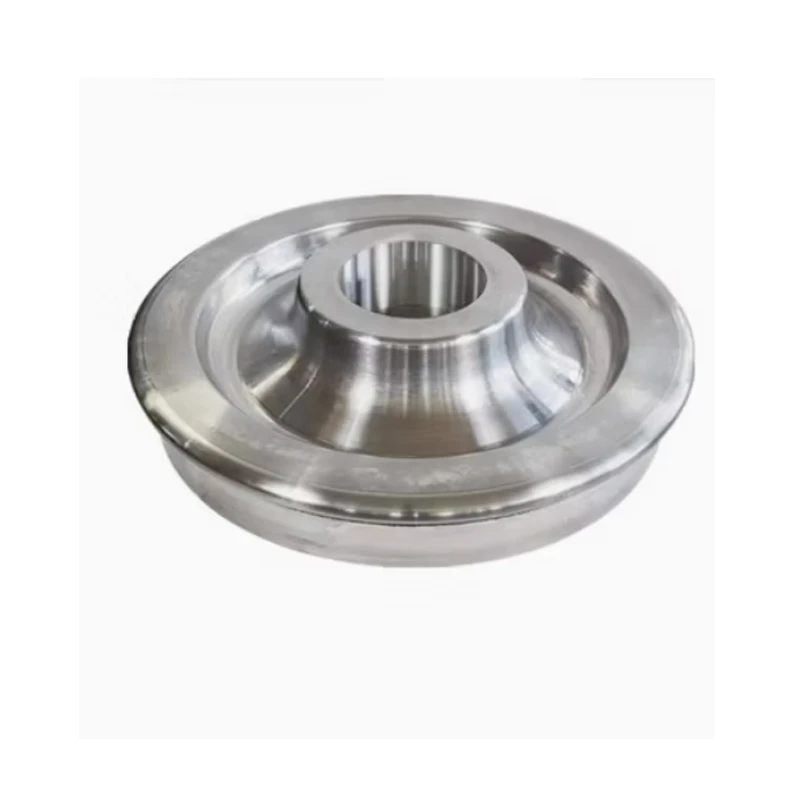High-Quality Gantry Crane Wheels - Durable Forged Solutions
Unveiling the Engineering Marvel: A Deep Dive into Gantry Crane Wheels
In the vast landscape of heavy industries, from bustling ports to sprawling steel mills, the seamless movement of massive loads relies heavily on critical components. Among these, gantry crane wheels stand out as unsung heroes, silently bearing immense weights and ensuring the precise, efficient operation of towering cranes. These specialized crane wheels are engineered for extreme durability, resistance to wear, and consistent performance under the most challenging conditions. This comprehensive guide delves into the intricate world of Crane Wheels, exploring industry trends, technical specifications, manufacturing excellence, and their indispensable role across diverse applications.
Understanding the Backbone of Heavy Lifting: Gantry Crane Wheels
Gantry crane wheels are the fundamental interface between a crane and its rail system. They are designed to withstand high radial and axial loads, resist abrasion, and ensure smooth, controlled motion. Their performance directly impacts the safety, efficiency, and longevity of the entire crane system, making material selection, manufacturing precision, and rigorous testing paramount.
Industry Trends and Technological Evolution in Crane Wheels
The global market for industrial crane components, including crane wheels, is experiencing robust growth, driven by increasing infrastructure development, expansion of manufacturing sectors, and modernization of existing industrial facilities. Recent market analysis projects a compound annual growth rate (CAGR) of approximately 4.5% for the industrial crane market from 2023 to 2030, with a significant portion attributed to component upgrades and replacements. This growth is fueling innovation in gantry crane wheels technology.
- Advanced Materials: The trend is moving towards higher strength-to-weight ratio alloys, such as specific grades of forged alloy steels (e.g., 42CrMo, 50CrV). These materials offer superior wear resistance and toughness, significantly extending the lifespan of forged crane wheels and reducing maintenance downtime.
- Smart Integration: The advent of Industry 4.0 is pushing for "smart" crane components. Future gantry crane wheels may incorporate embedded sensors for real-time monitoring of temperature, vibration, load, and wear. This predictive maintenance capability can drastically improve operational efficiency and prevent unexpected failures.
- Energy Efficiency: Designs are evolving to minimize rolling resistance and friction, leading to lower energy consumption. This includes optimizing wheel profiles, improving bearing technology, and applying advanced lubrication solutions.
- Enhanced Durability & Corrosion Resistance: For harsh environments, such as those in maritime ports or chemical plants, there's a growing demand for crane wheels with superior corrosion resistance, often achieved through specialized coatings or stainless steel alloys.
- Sustainable Manufacturing: Manufacturers are increasingly adopting environmentally friendly production processes, reducing waste, and improving energy efficiency in their facilities.
Key Technical Parameters of Gantry Crane Wheels
The selection and specification of gantry crane wheels are governed by a complex set of technical parameters, each critical for optimal performance. Understanding these parameters is essential for engineers and procurement specialists to ensure compatibility, safety, and longevity.
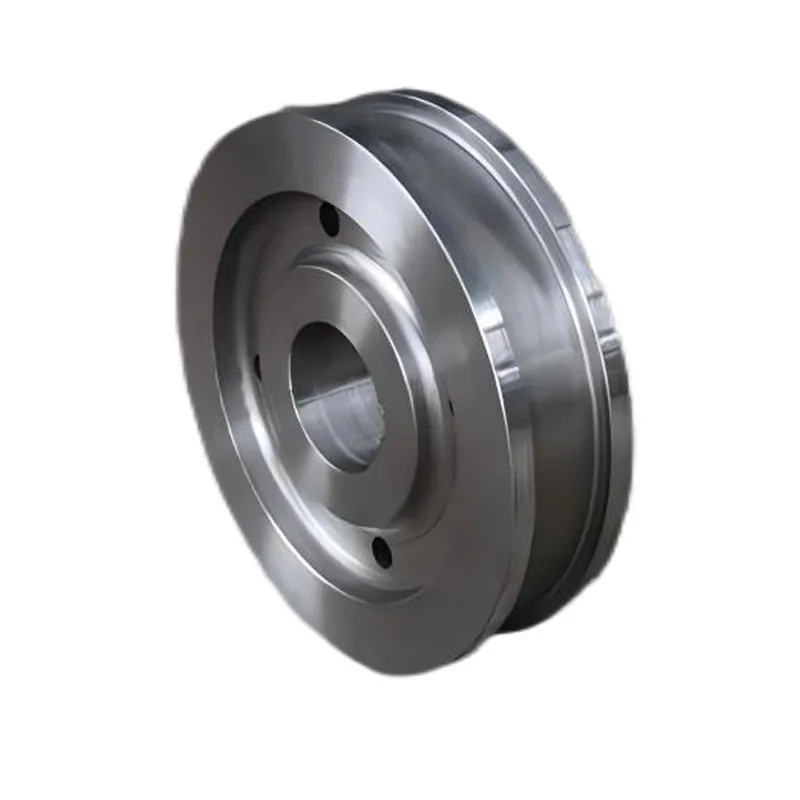
Product Specification Table: Standard Crane Wheels
| Parameter | Description | Typical Range/Value | Units |
|---|---|---|---|
| Diameter (D) | Outer diameter of the wheel tread. | 200 - 1250+ | mm |
| Tread Hardness | Hardness of the wheel's contact surface, often achieved through heat treatment. | HB 300-380 (standard), up to HB 500+ (heavy-duty) | Brinell Hardness |
| Material Grade | Common materials include C50, C45, 42CrMo, 50CrMoV4. Forging generally uses higher alloy content. | AISI 1050, 4140, 4340, 5140 | Steel Grade |
| Flange Type | Single flange, double flange, or flangeless. Determines guidance. | SF, DF, FL | Type |
| Load Capacity (Max) | Maximum permissible static load per wheel. Dynamic load factors apply. | 5 - 200+ | Tons |
| Axle Diameter | Diameter of the central bore for the axle. | 50 - 300+ | mm |
| Surface Finish (Tread) | Roughness of the tread surface. Affects friction and wear. | Ra 3.2 - 6.3 | µm |
| Manufacturing Process | Primary method of shaping the wheel blank. | Forged, Cast, Fabricated | Process |
| Heat Treatment | Processes like quenching & tempering, induction hardening to enhance mechanical properties. | QT, IH, Carburizing | Method |
| Service Life Expectancy | Estimated operational life under specified conditions. | 5 - 20+ Years | Years |
For specialized applications, parameters like impact strength, fatigue resistance, and specific corrosion resistance requirements are also critical. Customization is often required for precise operational needs.
Comprehensive Manufacturing Process of Gantry Crane Wheels
The creation of high-quality gantry crane wheels is a sophisticated process that combines advanced metallurgy, precision engineering, and stringent quality control. Manufacturers like those specializing in crane wheels china leverage decades of expertise to produce components that meet international standards.
Material Selection & Sourcing
The foundation of a durable crane wheel begins with selecting the right high-grade alloy steel. Common materials include carbon steels (e.g., C45, C50) and alloy steels (e.g., 42CrMo4, 50CrMoV4) known for their excellent mechanical properties, wear resistance, and hardenability. Material sourcing from certified suppliers ensures traceability and adherence to chemical composition standards like ASTM A668 or DIN EN 10083.
Forging or Casting of Wheel Blank
- Forging: For heavy-duty gantry crane wheels, forging is the preferred method. A heated steel billet is shaped under immense pressure (often 2000+ tons) using hydraulic presses or hammers. This process refines the grain structure, eliminating porosity and internal defects, thereby enhancing the material's strength, toughness, and fatigue resistance significantly. This results in superior forged crane wheels.
- Casting: For larger, more complex shapes or less critically stressed wheels, casting might be used. Molten steel is poured into molds. While more versatile for intricate designs, cast wheels typically have lower mechanical properties and require more rigorous inspection for internal flaws compared to forged ones.
Heat Treatment
After forging or casting, the wheel blank undergoes precise heat treatment. This is a critical step that dictates the final mechanical properties, especially hardness and toughness. Common processes include:
- Quenching & Tempering (Q&T): The wheel is heated to an austenitic temperature, rapidly cooled (quenched), and then reheated to a lower temperature (tempered). This process refines grain structure and achieves a balanced combination of high hardness and ductility, crucial for wear resistance and impact strength.
- Induction Hardening: For specific areas like the wheel tread and flange, induction hardening provides localized surface hardening to depths ranging from 5mm to 15mm. This creates an extremely hard wear layer while retaining a tougher, more ductile core, preventing brittle fracture. The hardness achieved can be up to HRC 55-62 (equivalent to HB 500-600).
CNC Machining
Post-heat treatment, the crane wheel blank is transferred to advanced Computer Numerical Control (CNC) machines. CNC machining ensures exceptional dimensional accuracy, surface finish, and precise profiling of the wheel tread, flange, and bore. This stage guarantees that the wheel meets the exact specifications for diameter, concentricity, parallelism, and surface roughness (e.g., Ra 3.2-6.3 µm on the tread), which are vital for smooth running and preventing premature rail wear.
Quality Inspection & Testing
Throughout the manufacturing process, and especially after final machining, rigorous quality control measures are implemented. This includes:
- Dimensional Inspection: Using precision tools and CMM (Coordinate Measuring Machines) to verify all critical dimensions.
- Hardness Testing: Measuring tread and flange hardness using Brinell, Rockwell, or Vickers methods to confirm heat treatment effectiveness.
- Non-Destructive Testing (NDT): Employing Ultrasonic Testing (UT) to detect internal flaws (e.g., cracks, inclusions, porosity) and Magnetic Particle Testing (MPT) or Dye Penetrant Testing (DPT) for surface cracks. Adherence to standards like ASTM E114, ASTM E709, or ISO 17640 is crucial.
- Material Chemical Analysis: Verifying the material composition using spectrometry.
- Mechanical Property Testing: Tensile strength, yield strength, impact toughness (Charpy V-notch test) are confirmed on test samples to meet design specifications.
Surface Treatment & Coating (Optional)
Depending on the application environment, gantry crane wheels may undergo surface treatments such as phosphating, painting, or specialized anti-corrosion coatings. These treatments enhance resistance to rust, chemicals, and extreme weather conditions, particularly vital in marine or chemical processing industries.
Assembly & Packaging
For complete wheel assemblies, bearings, axles, and bearing housings are precisely fitted. Finally, the finished wheels are carefully packaged to prevent damage during transit, often with protective coatings on machined surfaces and robust crating for international shipping.
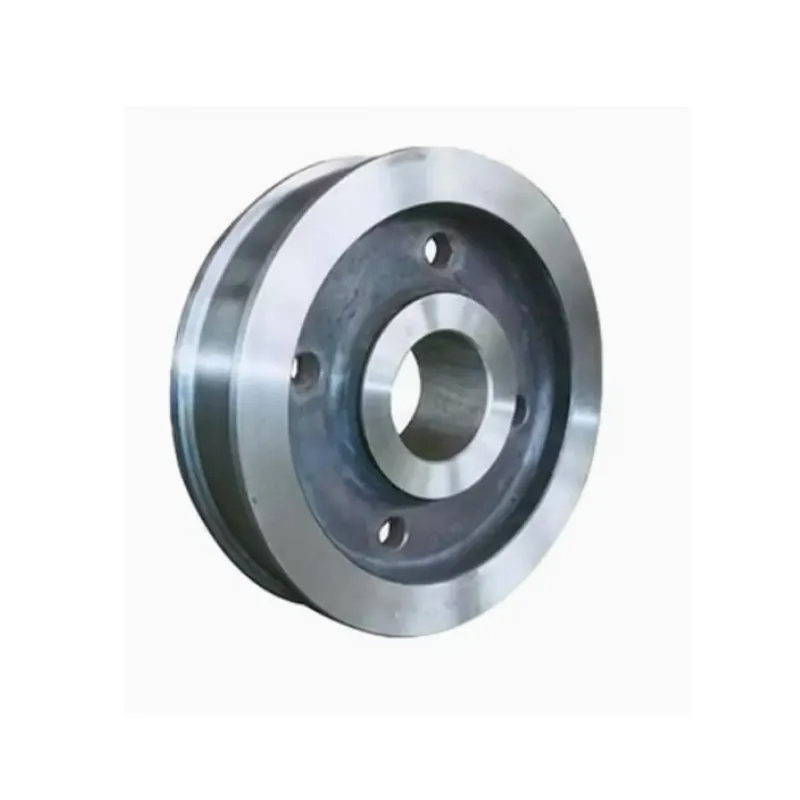
Technical Advantages of High-Quality Gantry Crane Wheels
Investing in superior gantry crane wheels yields significant operational benefits:
- Exceptional Durability and Lifespan: Through precise forging and advanced heat treatment (e.g., induction hardening to HB 500-580), these wheels achieve superior wear resistance and extended service life, often exceeding 10-15 years even under continuous heavy use. This drastically reduces replacement frequency and associated downtime.
- Optimized Performance and Energy Efficiency: High-precision CNC machining ensures perfectly concentric and profiled treads, minimizing rolling friction and reducing energy consumption by up to 10-15% compared to less precise alternatives. This translates into tangible operational cost savings.
- Enhanced Safety: The rigorous NDT (Non-Destructive Testing) processes, including Ultrasonic and Magnetic Particle Inspection, guarantee the absence of internal and surface defects, significantly reducing the risk of catastrophic failure and enhancing overall operational safety.
- Corrosion Resistance: For applications in corrosive environments (e.g., port cranes, chemical plants), specific material alloys (e.g., stainless steel grades) and advanced protective coatings provide unparalleled resistance to rust and chemical degradation, maintaining structural integrity over time.
- Low Maintenance Requirements: The robust construction and excellent wear characteristics of premium wheels mean less frequent need for inspection, lubrication, and replacement, leading to lower maintenance costs and higher equipment availability.
- Reduced Rail Wear: The precise manufacturing of the wheel tread and flange, coupled with optimal hardness profiles, minimizes abrasive wear on the crane rails, prolonging the life of both the wheels and the rail infrastructure. This is a critical factor for bridge crane wheels and gantry systems.
Application Scenarios and Industry Benefits
Gantry crane wheels are indispensable across a multitude of heavy industries where reliable and continuous material handling is crucial:
- Metallurgy and Steel Mills: In environments characterized by high temperatures, heavy loads (e.g., hot metal ladles, steel coils), and abrasive dust, forged crane wheels made from specialized heat-resistant alloys are paramount. Their superior hardness and toughness ensure operational continuity and safety.
- Port and Marine Terminals: Exposed to saltwater corrosion, high humidity, and continuous heavy-duty cycles (e.g., container111 handling), gantry crane wheels in port applications require robust anti-corrosion treatments and materials like 42CrMo for extended lifespan. They ensure rapid cargo throughput.
- Shipyards: Cranes moving massive ship sections demand wheels capable of handling extremely heavy, often imbalanced, loads over long distances. Durability and precise movement are critical for safe assembly.
- Power Generation (Thermal & Nuclear): For handling turbines, generators, and fuel rods, precision and extreme reliability are non-negotiable. Crane wheels here must meet stringent safety and operational standards.
- Mining and Construction: In rugged, dusty, and often remote environments, wheels must withstand significant impact and continuous operation. Robust construction and wear resistance are key to minimizing downtime.
- Chemical and Petrochemical Plants: Exposed to corrosive chemicals and potential explosive atmospheres, specialized crane wheels with specific surface treatments or material grades are vital to prevent material degradation and ensure safety. Their anti-corrosion properties contribute to long-term structural integrity.
- Waste Water Treatment Facilities: Though perhaps less intuitively obvious, large gantry cranes are used for managing sludge, moving heavy equipment, and maintaining infrastructure. Here, corrosion resistance against various chemicals and moisture is paramount.
Choosing the Right Partner: Manufacturer Comparison and Customization
The market for crane wheels, including prominent suppliers from crane wheels china, offers a wide range of products. Selecting the right manufacturer is crucial for long-term operational success. Key factors to consider include:
- R&D and Engineering Capability: A strong manufacturer invests in research and development, offering innovative solutions and having the engineering expertise to analyze specific client requirements and design bespoke gantry crane wheels. This includes using advanced tools like Finite Element Analysis (FEA) for stress prediction.
- Manufacturing Scale and Technology: Look for facilities equipped with state-of-the-art forging presses, large-scale heat treatment furnaces, and multi-axis CNC machining centers. This indicates capacity for precision and high-volume production.
- Quality Assurance System: A manufacturer committed to quality will hold international certifications such as ISO 9001:2015, CE, and adhere to industry standards like DIN, ASTM, and JIS. Comprehensive in-house testing facilities are a must.
- Material Traceability: Ensuring that all raw materials are sourced from reputable suppliers and fully traceable back to their origin. This guarantees consistency and quality.
- Customization Expertise: Many applications require non-standard wheel designs. A good manufacturer can provide tailored solutions based on unique load requirements, rail profiles, operating temperatures, and environmental conditions. This includes custom diameters, bore sizes, keyway configurations, and surface treatments.
- After-Sales Support: Availability of technical support, spare parts, and guidance on installation and maintenance is vital for minimizing downtime.
Customization Solutions for Your Specific Needs
Recognizing that no two crane applications are identical, leading manufacturers excel in providing bespoke gantry crane wheels. This involves a collaborative design process where client specifications are meticulously translated into engineering solutions:
- Material Customization: Selection of specific steel grades (e.g., higher carbon, chromium, molybdenum content) to achieve targeted hardness, impact resistance, or corrosion properties.
- Profile Design: Engineering custom wheel tread profiles to perfectly match existing rail systems, minimizing wear and maximizing contact efficiency. This is especially relevant for older bridge crane wheels or unusual rail setups.
- Dimensional Adjustments: Precise tailoring of wheel diameter, bore size, hub width, and flange thickness to integrate seamlessly with existing crane structures and axle configurations.
- Heat Treatment Optimization: Fine-tuning quenching and tempering parameters, or adjusting induction hardening depths and hardness profiles, to suit specific load cycles and environmental stressors.
- Surface Coatings: Application of specialized coatings (e.g., anti-corrosion paints, nickel plating, ceramic coatings) for extreme environments like high-salinity air, acidic fumes, or abrasive dust.
- Integrated Components: Providing complete wheel assemblies including bearings (e.g., spherical roller bearings, tapered roller bearings), axles, and bearing housings, ensuring perfect fit and optimal performance.
Application Cases: Gantry Crane Wheels in Action
Here are illustrative examples demonstrating the impact of high-quality gantry crane wheels:
Case Study 1: Steel Coil Handling at a Major Mill
A large integrated steel mill faced frequent breakdowns of their overhead bridge crane wheels, leading to costly downtime in their hot-rolling facility. The original cast wheels, operating under high temperatures and carrying 100-ton steel coils, exhibited rapid tread wear and flange chipping. Upon switching to custom-designed, induction-hardened forged crane wheels (material: 42CrMo, tread hardness HB 550), the mill observed a 300% increase in wheel lifespan (from 2 years to 8+ years). The enhanced wear resistance significantly reduced maintenance intervals and improved overall operational efficiency, leading to an estimated annual saving of $250,000 in replacement costs and lost production.
Case Study 2: Container Handling at a Global Port Terminal
A major international shipping terminal experienced challenges with their Rubber-Tyred Gantry (RTG) and Rail-Mounted Gantry (RMG) cranes due to rapid wear and corrosion of standard gantry crane wheels in the humid, saline environment. The solution involved bespoke crane wheels forged from 50CrV4 steel, treated with an advanced anti-corrosion coating, and featuring an optimized tread profile for reduced rail stress. This upgrade resulted in a 25% reduction in rail wear, extending rail lifespan, and a doubling of wheel service life, directly contributing to smoother operations and reduced infrastructural maintenance for the bustling port.
Case Study 3: Chemical Plant Overhead Crane Modernization
A petrochemical complex required replacement crane wheels for a critical overhead crane operating in an environment with exposure to mild acids and corrosive fumes. Standard wheels were failing prematurely due to chemical degradation. The client opted for gantry crane wheels manufactured from a specialized stainless steel alloy (e.g., Duplex 2205 equivalent) with a unique surface passivation treatment. This solution provided superior corrosion resistance, ensuring uninterrupted operation of the crane in a hazardous zone, enhancing safety, and virtually eliminating wheel-related downtime due to environmental factors.
Maintenance, Longevity, and Trustworthiness
While high-quality gantry crane wheels are designed for durability, proper maintenance is crucial for maximizing their lifespan and ensuring consistent performance. Regular inspections for wear, cracks, and flange deformation, coupled with proper lubrication of associated bearings, are paramount. Adherence to manufacturer-recommended maintenance schedules can significantly extend the operational life of the wheels.
Our Commitment to Trustworthiness:
- Quality Assurance: All Crane Wheels are manufactured under strict ISO 9001:2015 certified quality management systems, ensuring consistent product excellence. Our processes comply with global standards such as DIN, ASTM, JIS, and ASME.
- Extensive Warranty: We stand behind the quality of our gantry crane wheels with a comprehensive warranty, covering material defects and manufacturing faults for a period of up to 2 years, demonstrating our confidence in product longevity.
- Reliable Delivery Cycle: With efficient production planning and robust supply chain management, we typically achieve a delivery cycle of 4-8 weeks for standard orders, with expedited options available for urgent requirements. Our transparent communication keeps clients informed at every stage.
- Dedicated Customer Support: Our team of experienced engineers and technical specialists provides comprehensive pre-sales consultation, ongoing technical support, and responsive after-sales service, ensuring seamless integration and optimal performance throughout the product lifecycle.
- Real-world Experience: With over two decades of experience serving diverse industries globally, our products have been proven in the most demanding operational environments, from the harsh climates of Northern Europe to the bustling ports of Asia, cementing our reputation as a trusted supplier of crane wheels china and worldwide.
Professional FAQ: Frequently Asked Questions about Gantry Crane Wheels
- Dimensional Accuracy: ISO 2768-1, DIN 7168 (for tolerances).
- Material Composition: ASTM A29/A29M, EN 10083.
- Hardness Testing: ASTM E10 (Brinell), ASTM E18 (Rockwell).
- Non-Destructive Testing (NDT): ASTM E114 (Ultrasonic Testing for internal defects), ASTM E709 (Magnetic Particle Testing for surface/sub-surface cracks), ISO 17640. These ensure the wheel is free from critical flaws.
Ready to Enhance Your Crane's Performance?
Discover how our precision-engineered gantry crane wheels can revolutionize your operations. Visit our product page for more details or to request a custom quote.
Explore Crane Wheels SolutionsReferences and Further Reading:
- "Advancements in Material Handling Systems and Components Market Forecast to 2030." Grand View Research, Inc., 2023. https://www.grandviewresearch.com/industry-analysis/material-handling-equipment-market (Example - actual link may vary or be behind paywall)
- "Understanding Heat Treatment Processes for Industrial Components." ASM International Forum on Materials, 2022. https://www.asminternational.org/web/news/press-room (Example - actual link may vary)
- "Standard Practice for NDT of Forgings." ASTM International. https://www.astm.org/standards/e114.htm (Example - actual link for E114)
- "ISO 9001:2015 - Quality Management Systems Requirements." International Organization for Standardization. https://www.iso.org/standard/62085.html (Example - actual link)
- "The Role of Forging in High-Performance Industrial Parts." Forging Industry Association (FIA) Journal, Vol. 45, No. 2, 2021. https://www.forging.org/ (Example - actual link may vary)
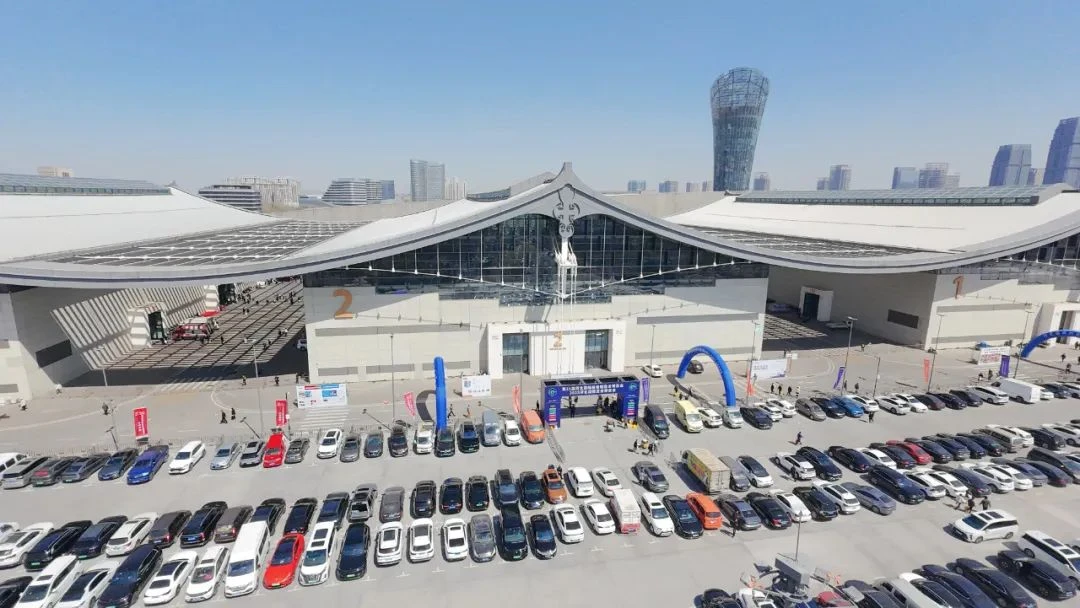
Today, the 2025 Hebei International Equipment Manufacturing Expo grandly opened at the Shijiazhuang International Convention and Exhibition Center!

Potentia Group 2025 Spring Festival Networking Event
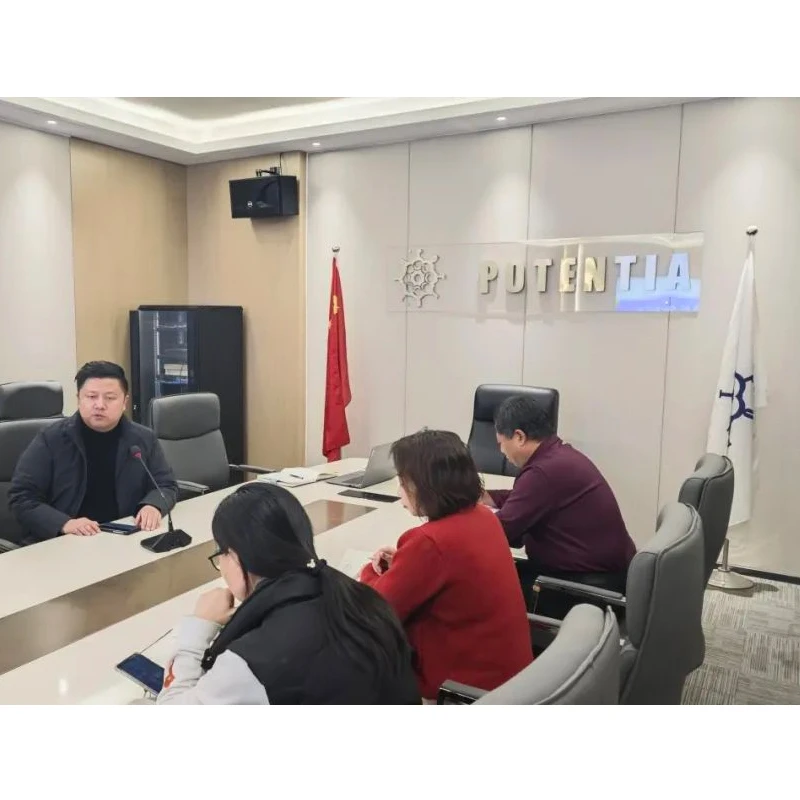
Transforming Through Struggle, Reaping Rewards Through Hard Work
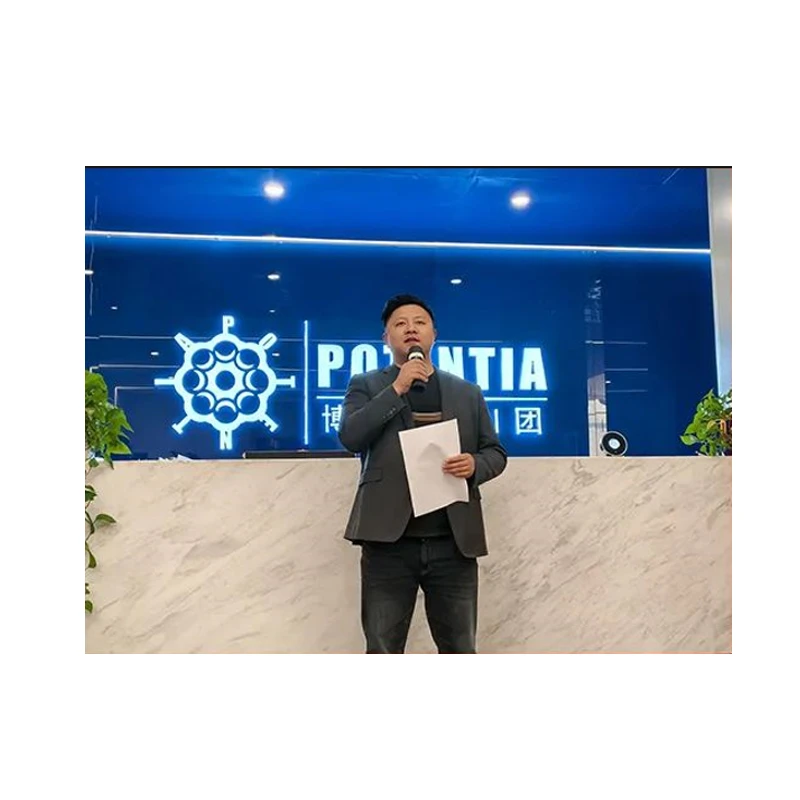
The Spirit of the Snake Welcomes the Spring, Wishing You Endless Good Luck
Engineered for Excellence
Our forged solutions deliver reliability and performance, powering demanding industries to keep operations running smoothly.

Sign up
for Newsletter
Subscribe to the weekly newsletter for all the latest updates

